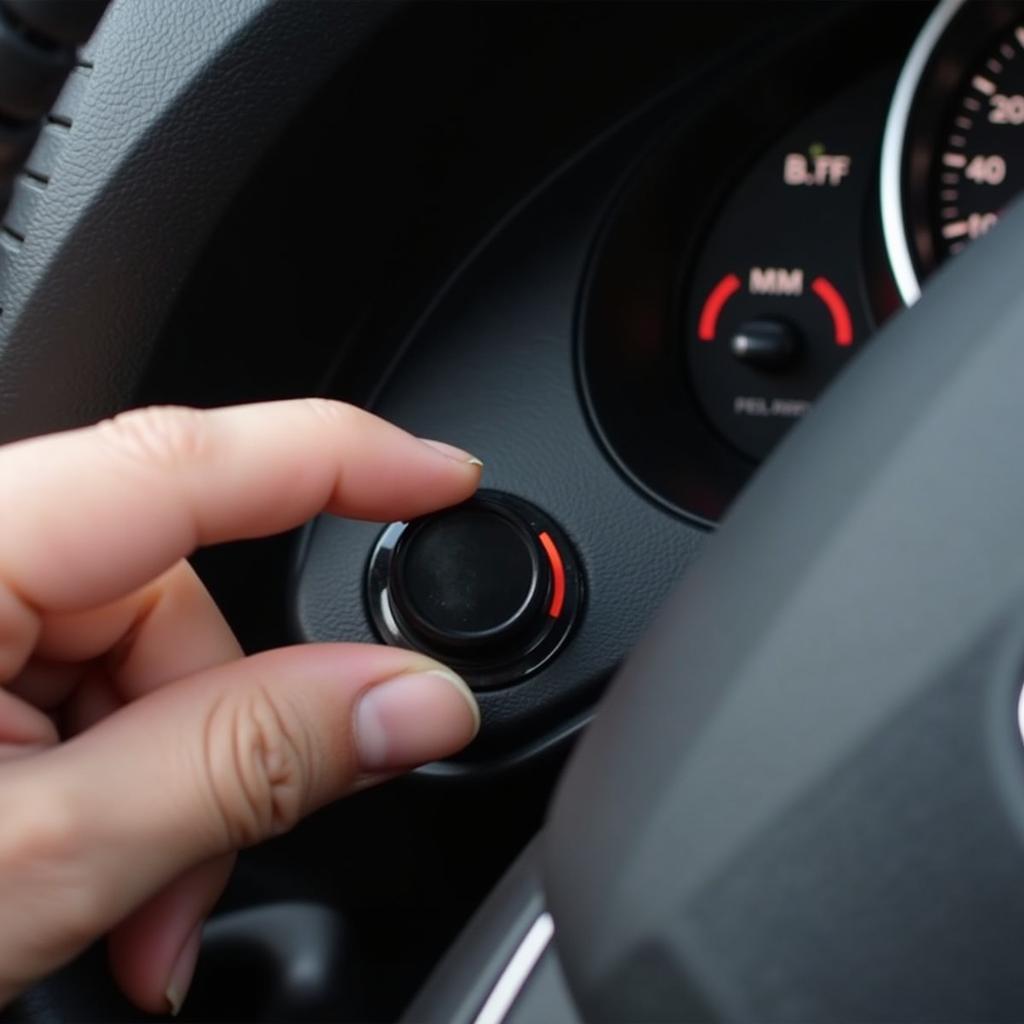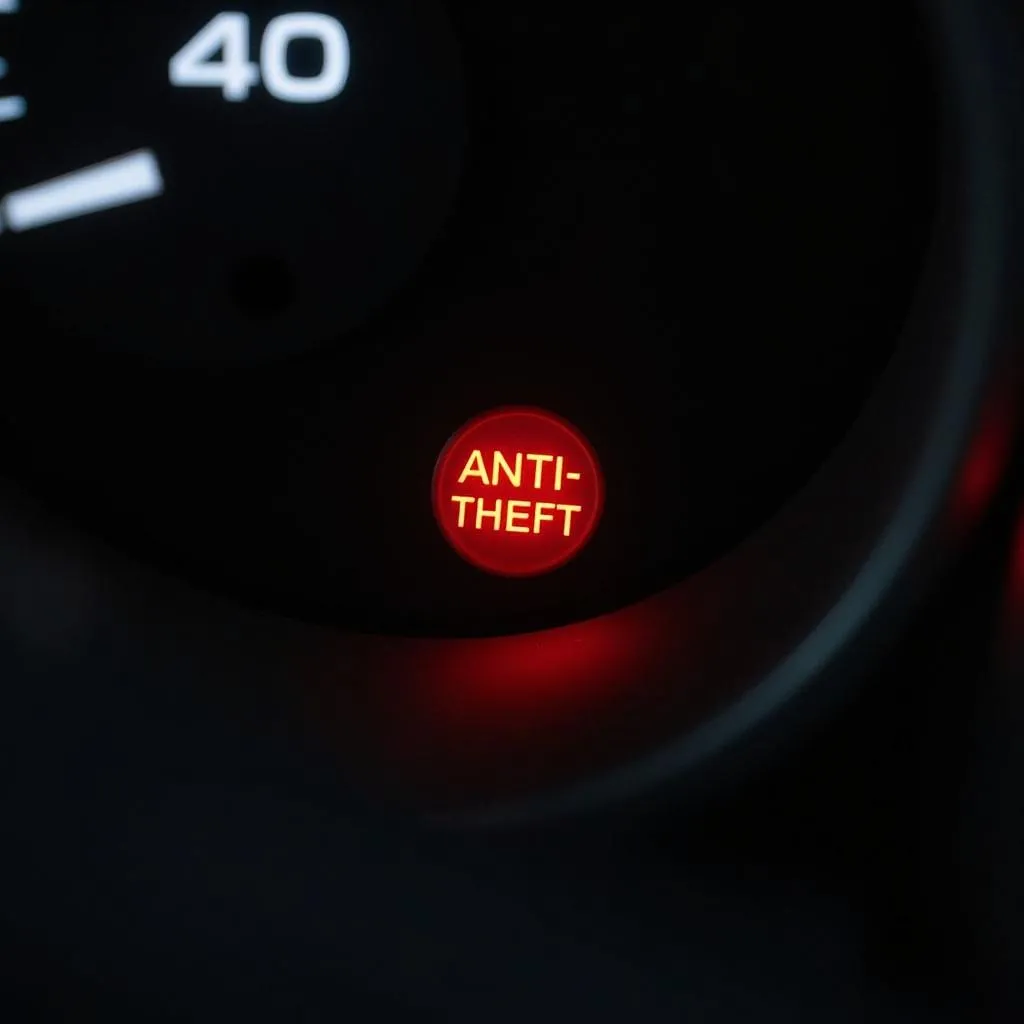Knowing when your brake pad warning light comes on is crucial for maintaining your vehicle’s safety and preventing costly repairs. This light signals when your brake pads are worn and need replacing. Ignoring it can lead to severe damage to your rotors and other brake components. Let’s dive into the intricacies of this vital warning system.
Brake pads are essential components designed to grip your rotors and slow or stop your vehicle. Over time, through normal use, these pads wear down. When the brake pad material reaches a critically low level, a sensor triggers the warning light on your dashboard. Understanding what triggers this light, and what to do when you see it, is essential for every driver. If you notice any unusual braking behavior, such as squealing or grinding, don’t hesitate to have your brakes inspected. It’s always better to be safe than sorry. You can learn more about what to do if your light doesn’t activate by reading about what if your brake pad warning light doesn’t come on.
Understanding the Brake Pad Warning Light
The brake pad warning light typically illuminates as a bright symbol on your dashboard. This symbol is often a circle enclosed by parentheses, resembling the shape of brake pads. However, the specific appearance can vary slightly between car manufacturers. Some vehicles may also display a text message along with the light, such as “BRAKE.”
What Triggers the Warning Light?
A small sensor embedded within the brake pad assembly is responsible for triggering the warning light. This sensor is designed to make contact with the brake rotor when the brake pad material wears down to a predetermined minimum thickness. This contact completes an electrical circuit, illuminating the warning light on the dashboard.
How to Respond to the Brake Pad Warning Light
When the brake pad warning light illuminates, it’s a clear signal that your brake pads require immediate attention. Continuing to drive with worn brake pads can compromise your stopping power and lead to more expensive repairs down the road. You can also check your vehicle’s manual or search for specific brake warning light symbols, such as those for the 2009 chrysler town and country brake warning light symbols.
- Schedule an Inspection: As soon as you see the light, schedule an appointment with a qualified mechanic to inspect your brakes.
- Avoid Heavy Braking: Minimize hard braking to reduce further wear on the already thin brake pads.
- Don’t Delay: Ignoring the warning light can lead to damage to your brake rotors, calipers, and other components. Addressing the issue promptly can save you money in the long run. You can read more on brake fluid warnings by checking out this article on brake fluid warning ford focus.
What if the Light Comes On Intermittently?
If your brake pad warning light comes on and off intermittently, it could indicate a problem with the sensor itself, low brake fluid, or a loose connection. It’s crucial to have this checked by a professional to diagnose and address the issue. Some older vehicles, like the 1996 jeep cherokee brake warning light, may have different warning light systems.
“A worn brake pad can be as thin as a dime,” says John Smith, a certified automotive technician with over 20 years of experience. “Continuing to drive on these thin pads can cause metal-on-metal contact, leading to costly rotor damage.”
Preventing Premature Brake Pad Wear
While brake pad wear is inevitable, there are steps you can take to prolong their lifespan:
- Smooth Braking: Avoid aggressive braking whenever possible. Gradually slowing down reduces stress on your brake system.
- Maintain Proper Tire Pressure: Correct tire pressure ensures even brake pad wear and improves fuel efficiency.
- Regular Brake Inspections: Have your brakes inspected at least once a year or as recommended by your vehicle’s manufacturer. Check resources like the one about the red brake warning light mini for specific information about your car model.
“Regular maintenance is key,” advises Sarah Jones, a leading automotive engineer. “Just like any other wear-and-tear item, brake pads need to be checked and replaced periodically.”
In conclusion, when your brake pad warning light comes on, it’s a critical signal demanding your immediate attention. Understanding what triggers this light and how to respond appropriately can help ensure your safety and prevent costly repairs. Addressing brake pad wear promptly is a small investment that contributes significantly to maintaining the health and longevity of your vehicle.
FAQ
-
How much does it cost to replace brake pads? The cost varies depending on your vehicle make and model, but typically ranges from $150 to $300 per axle.
-
Can I replace my brake pads myself? While possible, it’s a job best left to qualified mechanics. Brake systems are complex and require specialized tools and knowledge.
-
How often should I replace my brake pads? There’s no set mileage interval, as driving habits and conditions play a significant role. However, most brake pads need replacing every 25,000 to 70,000 miles.
-
What happens if I ignore the brake pad warning light? Ignoring the light can lead to damage to your rotors, calipers, and other brake components, resulting in more extensive and costly repairs.
-
Can the brake pad warning light come on for reasons other than worn pads? Yes, a malfunctioning sensor, low brake fluid, or a loose connection can also trigger the light.
-
How do I know if my rotors need replacing? A mechanic can measure the thickness of your rotors to determine if they need resurfacing or replacement.
-
What are the signs of worn brake pads besides the warning light? Squealing, grinding, or vibration during braking can indicate worn brake pads.


